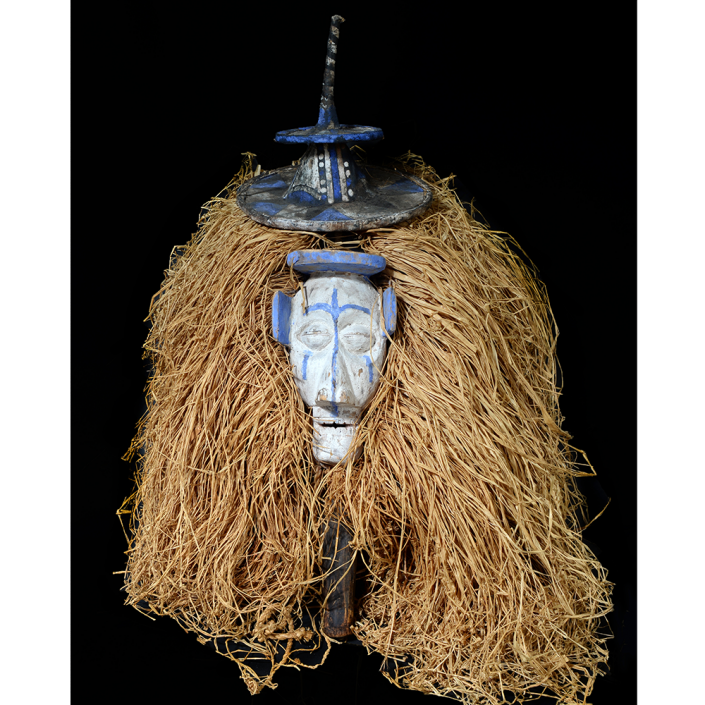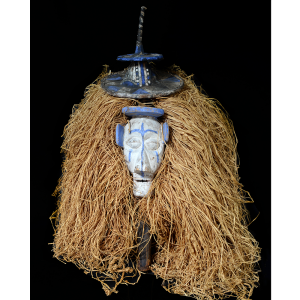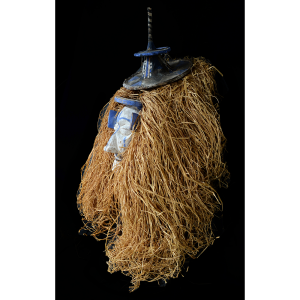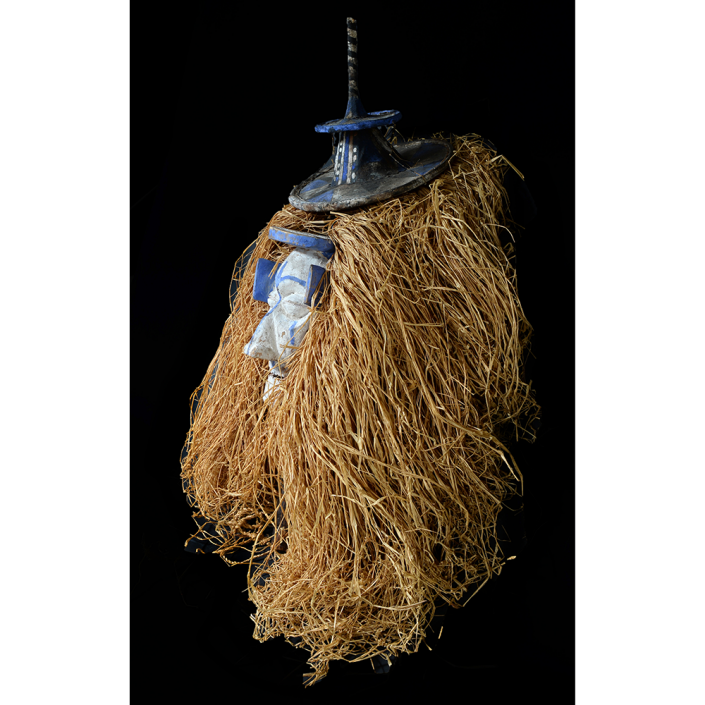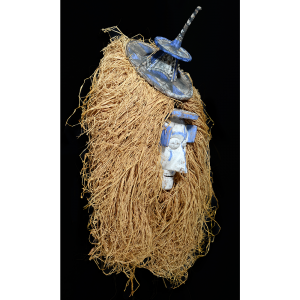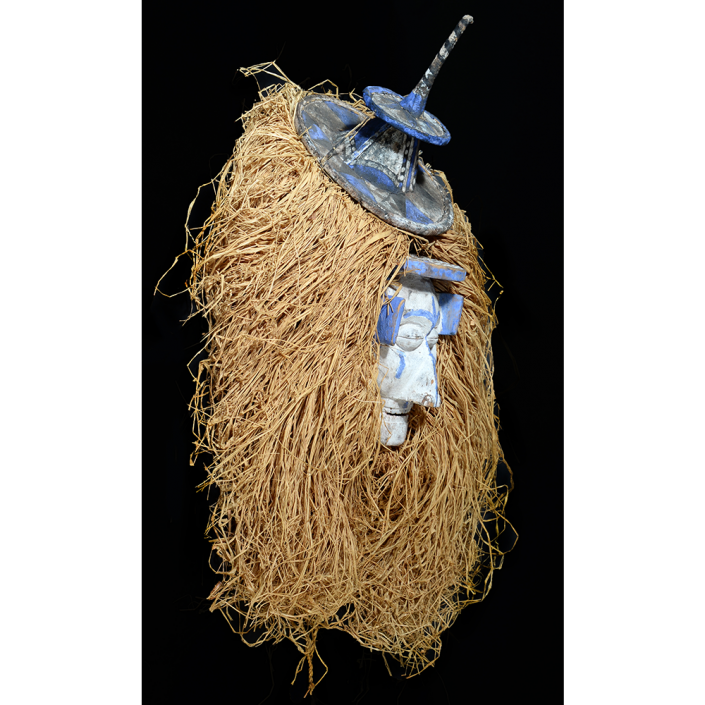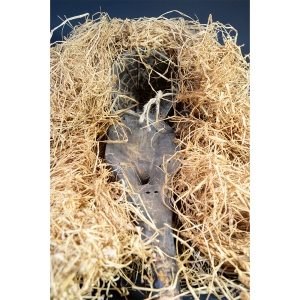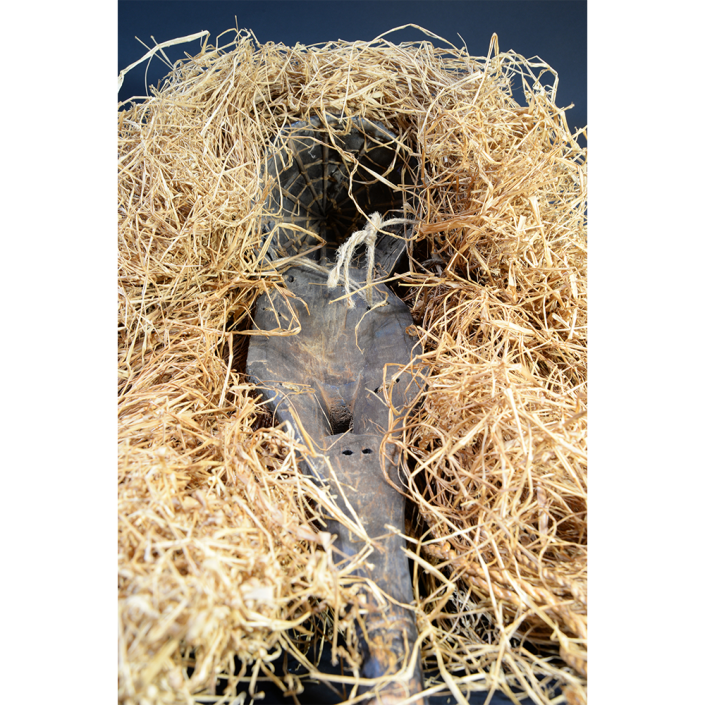TITLE: Yaka Ndeemba Mask
TYPE: helmet mask
GENERAL REGION: Africa
COUNTRY: Congo, Dem. Rep. of
ETHNICITY: Yaka
DESCRIPTION: Ndeemba N’khanda mask
CATALOG ID: AFCD012
MAKER: Unknown
CEREMONY: Makunda (N’khanda)
FUNCTION: Adult Initiation
AGE: ca. 1980s
MAIN MATERIAL: wood
OTHER MATERIALS: split cane; vegetable fiber; raffia; pigment
The Yaka people of Angola and the Democratic Republic of the Congo have a male initiation society known as Makunda or N’khanda, which is charged with circumcising, hazing, and teaching boys to become a man (mainly, education in hunting and sex). During the circumcision dance performances (kinkanda), the initiates wear special masks while their teachers alone are permitted to wear the ritual masks of the Makunda. After initiation, the boys are led out of seclusion and back into the community. Before festivities can begin, the head teacher (kahyuudi or kayudi) commissions a carver (nkalaweeni or mvumbwa) to create a series of masks. Many types of masks are worn or danced in succession during the final initiation feast:
- Kambaandzya (a raffia cloth domed helmet mask with a brim bisecting it; the mask is covered in black resin and painted with geometric designs in red, white, blue, and yellow)
- Tsekedi (a leather or raffia cloth helmet mask with a white, human face and a series of horizontal discs on an inverted cone topping the helmet)
- Mweelu (a helmet made of braided raffia fiber with large numbers of feathers; birdlike eyes in wood, gourd or bamboo; and a hornbill beak for a mouth)
- Ndeemba (an abstract human face with bulging eyes carved of wood; many phallic rods come out of the helmet in all directions, including the inverted cone on the very top)
- Kholuka (a polychrome human face with bulging eyes, and an open mouth showing the teeth, carved of wood; horizontal discs on an inverted cone come from the top, with bird feathers, and polychrome figures of humans or animals)
The kholuka, also known as a mbaala, is worn either by the leader of the initiation or the senior initiate. It is the last danced, and it is danced alone to signal the end of the initiation ceremony. Unlike the other masked dances, which are entertaining to the audience, the kholuka creates a sense of unease due to the overtly sexual behavior of the dancer.
For more on Yaka masquerade, see Arthur P. Bourgeois, Art of the Yaka and Suku (1984).
